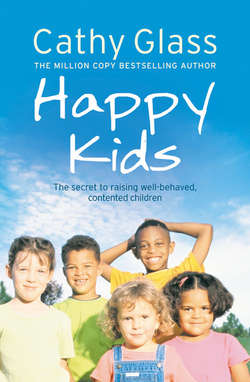Читать книгу Happy Kids: The Secrets to Raising Well-Behaved, Contented Children - Cathy Glass, Cathy Glass - Страница 23
The closed choice
ОглавлениеI like this technique immensely, as it’s easy and instant. I use it all the time to ensure cooperation as part of the 3Rs, and with all ages of children. It works with adults too! A closed choice is a clever little ploy that allows the child to believe he or she is making his or her own decision, while in effect the child is complying with what you have asked him or her to do. It is highly successful and greatly reduces confrontation, while increasing cooperation. The end result is that the child has done as you have asked without it becoming an issue.
It works like this. You want a child to do something which you think is going to be an issue, as it has been an issue in the past, so you offer two alternatives which lead to the same result – i.e. the child does as you want.
Let’s say you want Tom to clear up his toys, which are littering the entire downstairs of the house. Tom has had a great time playing, but you know from previous experience that he is less enthusiastic about clearing up and likely to refuse, ignore you or throw a wobbler. Now is a good time to use the closed choice. Instead of simply saying, ‘Tom, put your toys away, please,’ you say, ‘Tom, it’s time to put your toys away. Which room do you want to clear up first?’ Rather than refusing, Tom will find the answer (the decision as to where he wants to begin) already on his lips – ‘This room first.’
Or say Claire needs to put on her shoes, because you are going out, but you know from past experience that Claire doesn’t like wearing her shoes and would rather go barefoot, as she does in the house. Instead of saying, ‘Claire, we’re going out shortly, so put on your shoes, please,’ and then bracing yourself for a tantrum, try instead: ‘Claire, we are going out soon. Here are your shoes. Which one would you like to put on first – left or right?’ You say this positively, while offering her the two shoes. Claire will already be taking the shoe she has chosen to put on first without realising she is completing your Request.
The closed choice works with children of all ages, right through to teenagers, although obviously the situation and choice offered varies. For a teenager there might be issues surrounding keeping their bedroom tidy (untidy bedrooms are synonymous with teenagers). So instead of ‘Tom, can you clear up your room now, please?’ which is likely to be ignored or at best acknowledged with a grunt and no movement to tidy, try: ‘Tom, do you want to clear up your room before you have your shower or after?’ Tom now has to make a decision, and both options result in some tidying of his bedroom.
If Tom or Claire says ‘Neither’ in answer to your closed-choice question (more likely in the older, teenage Tom than the younger Tom), then see it through with the 3Rs. Begin with a Request that is also a closed choice – ‘Tom, your bedroom needs tidying. Do you want to tidy it before or after your shower?’ If Tom says ‘Neither', then Repeat, and Reaffirm with a warning of the sanction for not complying. With the teenage Tom, who likes MSN-ing his friends in the evening, the sanction might be that the computer doesn’t go on until he has done as you have asked. However, if you have been using the 3Rs for some time Tom will be more likely to do as you have asked without being warned of a sanction. He will know from past experience that you mean what you say, so he might as well comply – if not immediately then within a reasonable time.
If you have two or more children not co-operating at the same time, as can easily happen in a large family, you can address them both together if they are in the same room. If they are not, address whichever child’s behaviour is causing the greater problem first. Once that child has cooperated, having his or her cooperation will be a good example to the other children and they are more likely to follow suit. Siblings can be catalysts for each other, positive and negative. I will say more about this later in family meetings.
